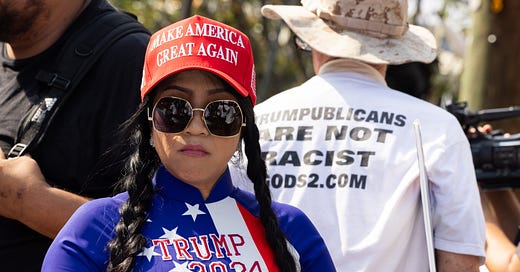The GOP’s Mysterious Eight Percent
What we can surmise about a new faction of Republican voters

In a multi-party, proportional system of elections, parties tend to be ideologically coherent. If a faction within a party begins to diverge from its organizing ideology, the dissenters have an incentive to break off and form a new, purer party, since winning an independent base of support could give them greater leverage in post-election negotiations to form a governing coalition.
Things work differently in a two-party, plurality system like our own. In such systems, factions within parties are incentivized to remain within the larger party, since a smaller breakaway faction would be unlikely to prevail in a plurality electoral contest. That makes our parties large, sprawling conglomerations of restive factions jostling for relative power and influence within the larger whole.
The present-day Democratic Party, for example, is a mixture of highly educated, well-off, urban and suburban white progressives; more socially moderate black and Latino voters; and working-class voters from the Midwest, who are also more moderate on social issues while embracing more populist views on economics and immigration. In a multi-party system, each of these factions, and maybe others, might be tempted to break off and form their own parties. But in ours, they jockey for position within the Democratic tent.
A recent article in the New York Times uses high-quality polling data to provide an x-ray of the contemporary GOP, revealing the party to be divided into six factions. (More precisely, the Times focused on “Republican and Republican-leaning voters.”) Five of them align roughly with what I would expect, though I appreciate the article’s specificity and detail about the estimated size and composition of each faction. But the sixth and smallest faction, amounting to 8 percent of the party, is a genuine surprise to me. I’m also surprised that, with a rare exception, so little has been written about this sixth group of Republicans, given that the future of the party may well lie with these voters.
Keep reading with a 7-day free trial
Subscribe to Notes from the Middleground to keep reading this post and get 7 days of free access to the full post archives.




